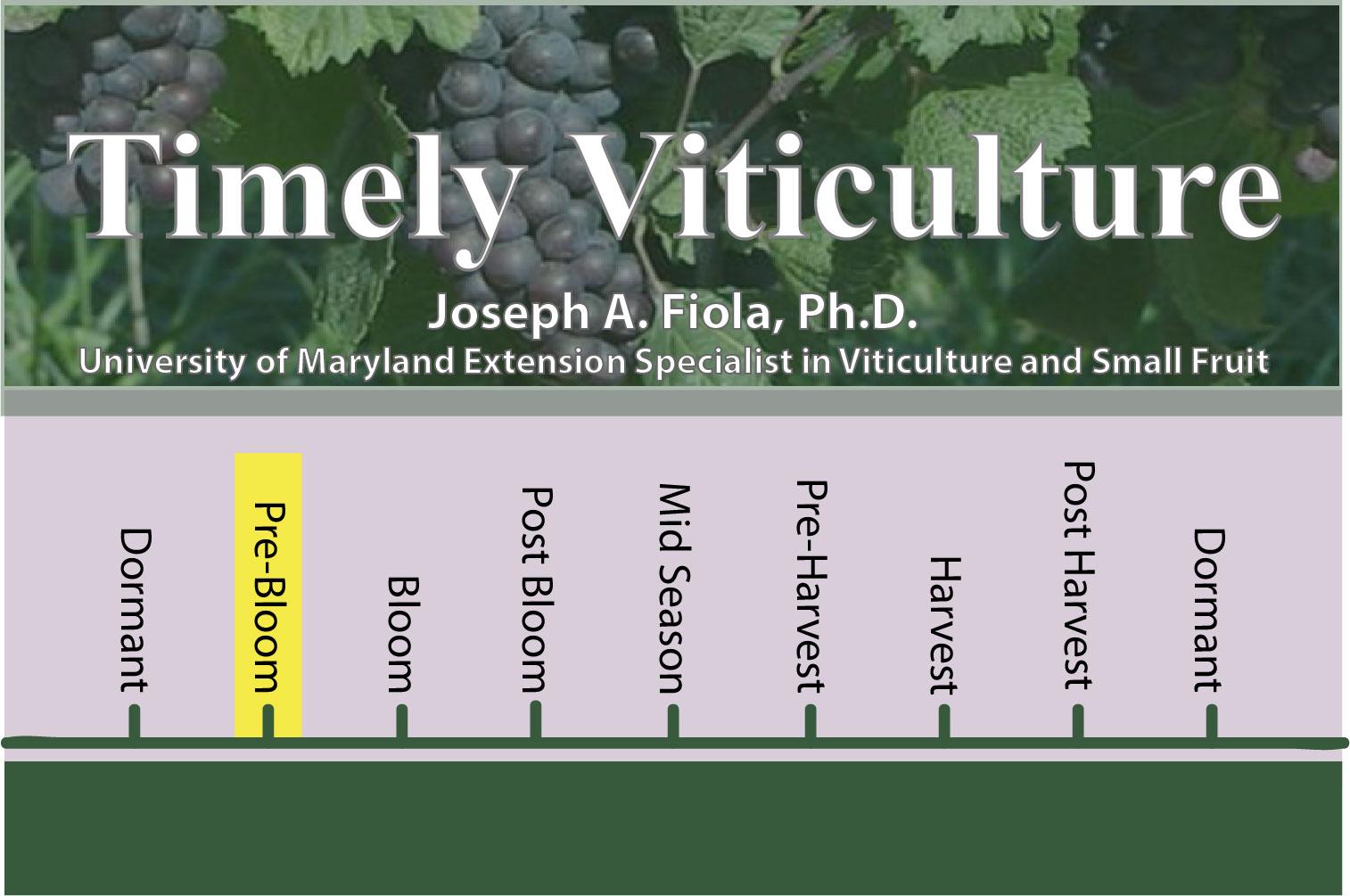Managing Frost Damage: Background, Compensation, and Potential Options
Spring frost is a significant production hazard in nearly all locations in the MidAtlantic however (luckily!) most areas of Maryland do no experience damage frequently compared to other areas. As with most issues in viticulture, prevention or avoidance through excellent attention to site selection is the best option to reduce risk. With that said, the following is some information on what to do when an event has occurred.
Dealing With the Damage
Previous TimelyVits dealt with deacclimation and options for reducing the hazard of frost damage. The purpose of this TimelyVit is to deal with the reality of managing a vineyard that has been damaged by frost.
- First and foremost – do not despair! – grapevines have a significant capacity to tolerate and compensate for damage incurred by the vine.
- A compound (triple) bud allows multiple levels of response for the vine
- Primary bud – full crop
- Secondary bud – can range from 0 to 60% of “typical” full crop.
- Tertiary bud – no crop – only vegetative survival and renewal of the vine.
- When damage occurs, vines may compensate for reduced cluster number by increasing the number of berries set per cluster.
- When damage occurs, vines may compensate for reduced berry number by increasing berry size.
- Many of the hybrid varieties (including ‘Seyval Blanc’, ‘Vidal Blanc’, ‘Marechal Foch’, ‘Chancellor’, and others) possess the capacity to produce fruitful shoots from ‘non-count’ basal buds. This means that new shoots may appear from axillary buds in the cordon (typically at the base of the spur) that will have clusters to compensate for the loss of the initial primary shoots.
- There are also 1-3 (sometimes more!) clusters on each primary shoot and the less developed the cluster the more likely it is to survive low temperatures.
- NOTE: The better your attention to open canopy management and light penetration to the buds on the shoots the previous year, the greater the flower bud initiation the previous year, the greater the number and size of clusters.
- A compound (triple) bud allows multiple levels of response for the vine
Managing Frost Damage: Background, Compensation, and Potential Options
- In many cases, it takes about 24 to 48 hours to actually be able to visualize the extent of the damage to the vine.
Regretfully there is not much you can do to react to the damage. A lot will depend on the extent of the damage and how the vine responds.
- There is an opportunity to try to induce the development of secondary shoots ASAP so your crop ripening will not be delayed significantly over the normal primary crop.
- If you have a variety, especially a hybrid, that may have fruitful secondaries or axillaries:
- Check the primary shoot. If the shoot tip is intact but all of the clusters on the primary shoot are completely burned, cut the whole shoot off to try to induce the secondary.
- NOTE: The longer the primary (12 inches or more) there is an increased risk that the secondary buds may not grow and possibly only the tertiary will develop.
- If the clusters are intact but there is damage to the growing tip, leave the shoot as is and let the vine compensate.
IMPORTANT NOTE: Remember, even if you think you have significant damage, DO NOT STOP YOUR CROP PROTECTIVE SPRAYS! You may a more significant crop than you expect and if you do not protect it you will lose it to disease.
Timely Viticulture is designed to give those in the Maryland grape industry a timely reminder on procedures or topics they should be considering in the vineyard.
